Related Research Articles
A corps area was a geographically-based organizational structure of the United States Army used to accomplish administrative, training, and tactical tasks from 1920 to 1942. Each corps area included divisions of the Regular Army, Organized Reserve, and National Guard of the United States. Developed as a result of serious mobilization problems during World War I, this organization provided a framework to rapidly expand the Army in times of war or national emergency, such as the Great Depression.

V Corps, formerly known as the Fifth Corps, is a regular corps of the United States Army headquartered at Fort Knox, Kentucky and Camp Kościuszko, Poland.

The VII Army Corps of the United States Army was one of the two principal corps of the United States Army Europe during the Cold War. Activated in 1918 for World War I, it was reactivated for World War II and again during the Cold War. During both World War II and the Cold War it was subordinate to the Seventh Army, or USAREUR and was headquartered at Kelley Barracks in Stuttgart, West Germany, from 1951 until it was redeployed to the US after significant success in the Gulf War in 1991, then inactivated in 1992.

The 35th Infantry Division, formerly known as the 35th Division, is an infantry formation of the United States Army National Guard headquartered at Fort Leavenworth, Kansas.

The 84th Training Command ("Railsplitters") is a formation of the United States Army. During World War I it was designated the 84th Division, American Expeditionary Forces; during World War II it was known as the 84th Infantry Division. From 1946 to 1952, the division was a part of the United States Army Reserve as the 84th Airborne Division. In 1959, the division was reorganized and redesignated once more as the 84th Division. The division was headquartered in Milwaukee in command of over 4,100 soldiers divided into eight brigades—including an ROTC brigade—spread throughout seven states.
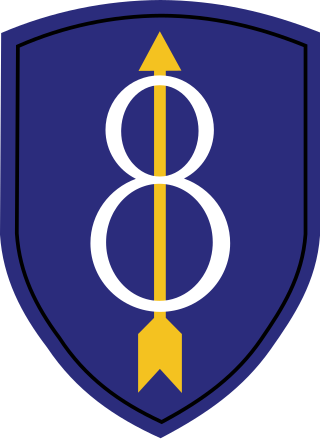
The 8th Infantry Division, ("Pathfinder") was an infantry division of the United States Army during the 20th century. The division served in World War I, World War II, and Operation Desert Storm. Initially activated in January 1918, the unit did not see combat during World War I and returned to the United States. Some units would serve in the American Expeditionary Force to Siberia. Activated again on 1 July 1940 as part of the build-up of military forces prior to the United States' entry into World War II, the division saw extensive action in the European Theatre of Operations. Following World War II, the division was moved to West Germany, where it remained stationed at the Rose Barracks in Bad Kreuznach until it was inactivated on 17 January 1992.
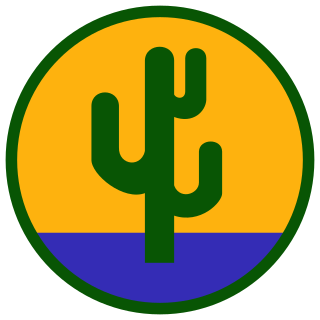
The 103rd Infantry Division was a unit of the United States Army that served in the U.S. Seventh Army of the 6th Army Group during World War II.
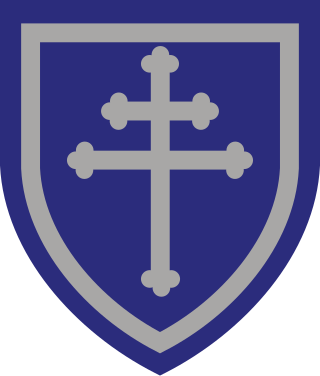
The 79th Infantry Division was an infantry formation of the United States Army Reserve in World Wars I and II.

The 88th Infantry Division was an infantry division of the United States Army that saw service in both World War I and World War II. It was one of the first of the Organized Reserve divisions to be called into federal service, created nearly "from scratch" after the implementation of the draft in 1940. Previous divisions were composed of either Regular Army or National Guard personnel. Much of the experience in reactivating it was used in the subsequent expansion of the U.S. Army.

The 44th Infantry Division was a division of the United States Army National Guard from October 1920 to November 1945, when it was inactivated after Federal Service during World War II. A second 44th Infantry Division existed in the Illinois Army National Guard from 1946 until October 1954, when that division was disbanded after federal service during the Korean War.

The 43rd Infantry Division was a formation of the United States Army from 1920 to 1963, serving in the Pacific during World War II. It was activated in 1920 as a National Guard Division in Connecticut, Maine, Rhode Island, and Vermont. The 143rd Regional Support Group of the Connecticut National Guard now carries on the heritage.

The 9th Infantry Division is an inactive infantry division of the United States Army. It was formed as the 9th Division during World War I, but never deployed overseas. In later years it was an important unit of the U.S. Army during World War II and the Vietnam War. It was also activated as a peacetime readiness unit from 1947 to 1962 at Fort Dix, New Jersey, and Fort Carson, Colorado, and from 1972 to 1991 as an active-duty infantry division at Fort Lewis, Washington. The division was inactivated in December 1991.
The 64th Cavalry Division of the United States Army Organized Reserve was created from the perceived need for additional cavalry units. It numbered in succession of the Regular Army Divisions, which were not all active at its creation. The 64th Cavalry Division was dispersed across the United States. The division was composed of personnel from Kentucky, Massachusetts, Vermont, New Hampshire and West Virginia.

The United States Army's 3rd Cavalry Division was created from the perceived need for additional cavalry units in the interwar period.
The Department of the Northwest was an U.S. Army Department created on September 6, 1862, to put down the Sioux uprising in Minnesota. Major General John Pope was made commander of the Department. At the end of the Civil War the Department was redesignated the Department of Dakota.
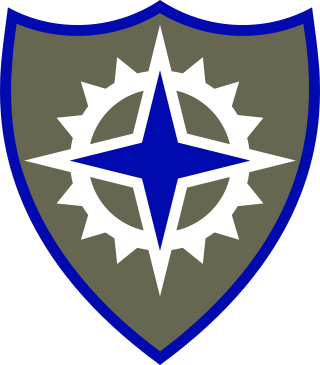
The XVI Corps was a corps-sized formation of the United States Army.
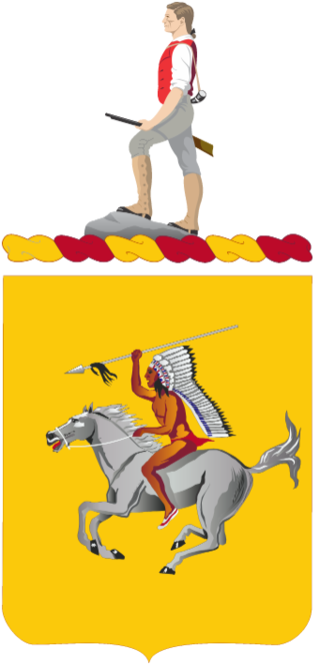
The 322nd Cavalry Regiment was a cavalry unit of the United States Army during the interwar period and from the Cold War to the early 1990s. The unit was activated as an Iowa and Minnesota Organized Reserve unit during the interwar period. It was converted into a tank destroyer battalion after the United States entered World War II. Reactivated in 1971 in the Army Reserve, it was eventually represented by two squadrons of the 89th Division (Training) before both were inactivated in the mid-1990s.
The First Corps Area was a Corps area of the United States Army. It replaced the Northeastern Department, and was headquartered at South Boston Army Base, Massachusetts. The organization included Army units and facilities in Maine, Massachusetts, New Hampshire, Rhode Island, Vermont, and Connecticut. It was responsible for the mobilization, and administration of the First United States Army (1936–38); the Fourth Army, I Army Corps with 9th, 26th, and 43d Divisions; XI Corps, constituted 29 July 1921, with the 76th, 94th, and 97th Division; coast defense units of the First Coast Artillery District, some units of the GHQ Reserve, and the Zone of the Interior support units of the First Corps Area Service Command. First Corps Area was redesignated First CASC in May 1941.
The Fifth Corps Area was a military district of the United States Army from 1920-21 to the Second World War. The Fifth Corps Area included the states of Indiana, Ohio, West Virginia, and Kentucky. Eventually it became Fifth Service Command on 22 July 1942, and then Fifth Service Command was disestablished in 1946.
Sixth Corps Area was a Corps area, effectively a military district, of the United States Army from 1921 to the 1940s. The headquarters was established at Fort Sheridan, Illinois, in August 1920, from portions of the former Central Department, but then moved to the U.S. Post Office Building at 1819 West Pershing Road in Chicago on 10 October 1921.